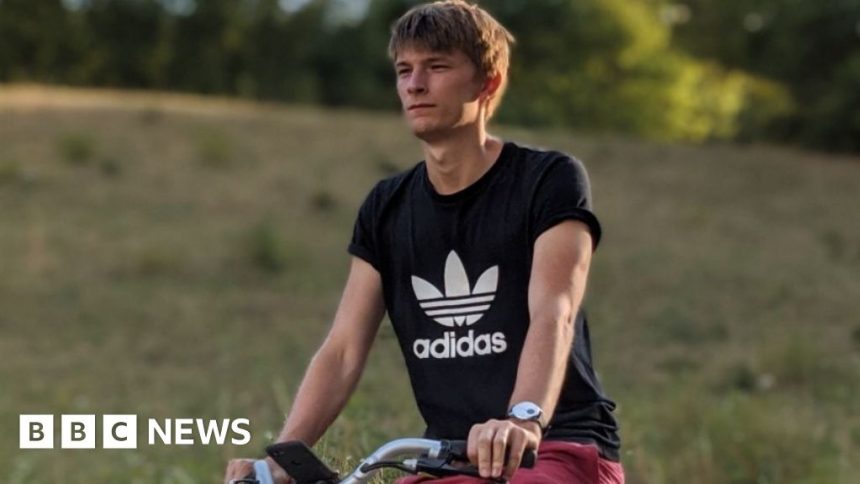He dreamed of a cycling revolution. Then an SUV crushed him
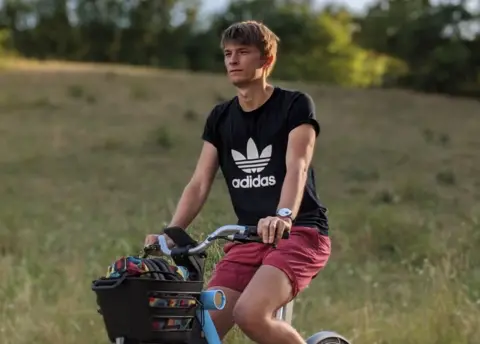 Nathalie Tison
Nathalie TisonCycling rates in Paris have soared in recent years. But the death of 27-year-old Paul Varry – who was allegedly run over by a driver – has exposed a darker side to Paris’s cycling revolution.
“This was not an accident,” Paul’s colleague Corentin believes.
We’re standing on the edge of a bike lane on Boulevard Malesherbes, steps away from the place where Paul was crushed by an SUV on 15 October 2024.
The moments preceding his death are subject to a criminal investigation.
Paul was cycling home from work. The cycle path is separated from the road by a slightly raised curb.
According to witnesses and CCTV, the driver of the SUV began driving in the bike lane. Prosecutors say the driver ran over Paul’s foot. Paul banged his fist on the bonnet.
The motorist reversed at first, but then allegedly drove towards the 27-year-old. An autopsy confirmed “the marks of the vehicle crossing his body”.
The 52-year-old driver has been charged with murder. His lawyer says he may have lost control of the vehicle in a stressful situation that he was trying to get out of.
At a hearing attended by news agency AFP, he broke into tears and said “I’m sorry for what happened. I never meant to run him over.”
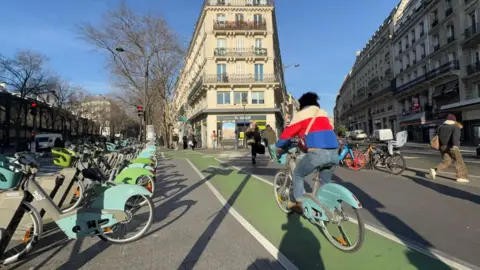
Paris has seen a surge in cycling as part of a broader transformation spearheaded by Mayor Anne Hidalgo. Over the last decade, the city has invested €400m (£331m) in cycling infrastructure, creating more than 1,000 kilometres of bike lanes.
According to a recent study, cycling now makes up more than 11% of trips within Paris, compared to just 4% by car. Walking is still the most popular way of getting around – accounting for 53% of journeys, followed by public transport (30%).
But despite the investment, cycling in Paris still feels precarious.
Bike lanes are patchy, lack uniformity and often don’t have designated traffic lights. The rules surrounding right of way aren’t always clear and are often flouted, making it difficult for cyclists to safely navigate.
Paul Varry’s death was extreme, but it resonated and has become a symbol of the daily struggle for space on the streets of Paris.
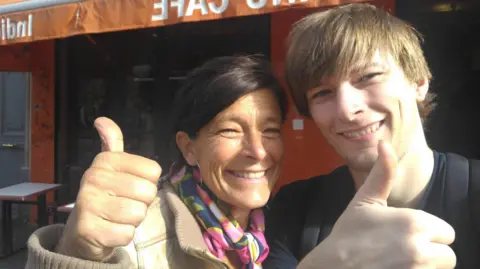
His mother, Nathalie Tison, remembers her son as a carefree spirit who embraced the freedom of cycling. “He was a very happy and very bubbly person, he had a lovely sense of humour and was always very gentle with the people around him. It’s such an injustice because he didn’t deserve at all what happened.”
She told me she had always been concerned about the dangers of her son riding in Paris, where she detected a sense of entitlement among some drivers.
“Drivers can be super aggressive – nothing can get in their way,” she said. “For some, the car is an extension of their virility and if anyone touches their car… it’s taken as a personal attack.
“I was afraid for him.”
Paul understood these risks, and was an active member of the cycling group Paris en Selle – Paris in the Saddle. He campaigned for more segregated space for bicycles and safer junctions.
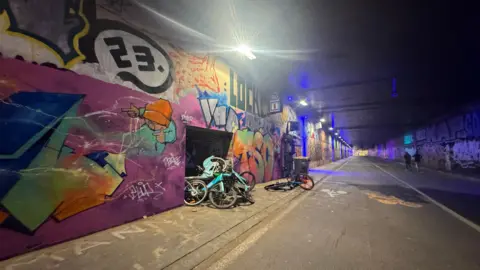
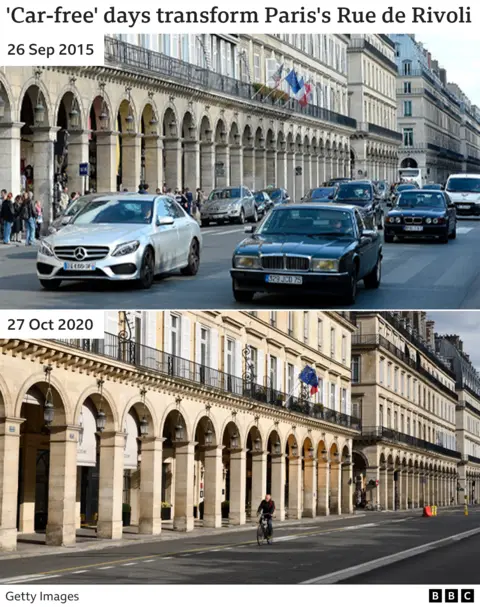 BBC / Getty Images
BBC / Getty ImagesAdvocates hope the progress made in Paris will continue.
Rémi Féraud, a socialist senator and Anne Hidalgo’s top choice for future mayor, doesn’t dream of a car-free future, “because there are Parisians who have cars”.
“But by reducing space for the car, we reserve it for those who really need to come by car,” he says. “We want a city that is 100% cyclable… It is an offer of freedom.”
Carving out more street space for cyclists has involved restricting space for cars. The number of parking spaces in Paris have been slashed by a half and certain vehicles have been banned from driving through the city.
Some drivers, particularly those from the suburbs, feel that the city’s car reduction policies have made their lives more difficult.
“Driving in Paris is like going to war,” says Shamy, a reserved 24-year-old midwife. “There are no rules.” I’m sitting in his car as he straddles a cycle path – he can’t reverse because people are walking there and in front of us cars are bumper to bumper.
What does he do if there’s a confrontation with a cyclist? “I just say sorry.”
Shamy lets me out as we approach a zone in the city centre where through-traffic has been outlawed – one of several measures that has drawn anger from business owners.
Patrick Aboukrat, who owns a fashion boutique in the Marais shopping district, has launched a lawsuit with other members of Comité Marais Paris, the business association he leads, to try to roll back some of the new rules.
He says they’re losing customers and that some were planning on selling up. “When young people say they want to open a shop, I say ‘open a shop in the suburbs, go outside of Paris.’
“We do understand the need to have fewer cars in the centre. I say to the Mayor we want to work together, to change the plan. But they don’t listen. It’s ideological. “
But Féraud, the senator, instead suggests the rise in online shopping is to blame.
According to polls, most of those who live within the main Paris ring road – of whom only 30% own a car – don’t mind the traffic-limiting measures.
Those on the outskirts tend to drive more, but they are not eligible to vote for the Paris mayor or influence its traffic polices.
Alexandra Legendre, who represents a motorists lobby group – the Drivers’ Defence League – says “no one [drives] for pleasure in Paris, it’s hell.” She feels authorities have prioritised cyclists at the expense of everyone else.
She accuses politicians of being blinkered by a desire to transform Paris into a cyclists’ paradise – ignoring road safety. She insists car drivers can’t be treated as “the only bad guys”.
There’s a consensus that Paul Varry’s death was a tragedy, but Ms Legendre doesn’t think it had anything to do with him being a cyclist.
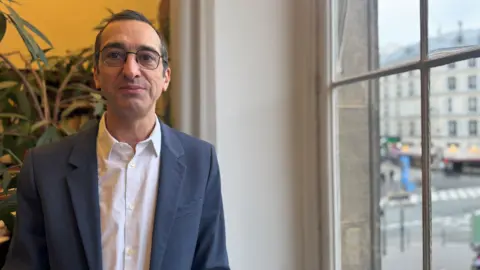
Paris is navigating the challenges of its cycling revolution as European capitals are under pressure to curb transport-related carbon emissions. The EU’s green deal aims to achieve a 90% reduction in transport-related greenhouse gas emissions by 2050.
Corentin, Paul’s colleague, points out that while Paris is still far from perfect, the infrastructure has improved significantly, making it easier and safer than ever to enjoy the view.
“We are in one of the most beautiful cities in the world, and there is no better way to see it than by bike.”
The constant stream of cyclists buzzing down Rue de Rivoli – which was a major highway until 2020 – suggests that the shift towards bike-friendly urban spaces is irreversible.
Paul’s mother hopes the safe transformation of Paris streets will be part of her son’s legacy.
No date has yet been set for the trial.
When it finally comes around, she will come face to face with the man who is accused of causing her son’s death for the first time.
He is a father of four, the authorities told her. Two families, she points out, have been “broken”.
She believes the way Paul lived and died must be a catalyst for change.
“He was so bright, intelligent, sensitive – it’s such a waste. And we’ve been reduced to a thousand pieces. We have to ask ourselves, what kind of society do we want to live in?”



